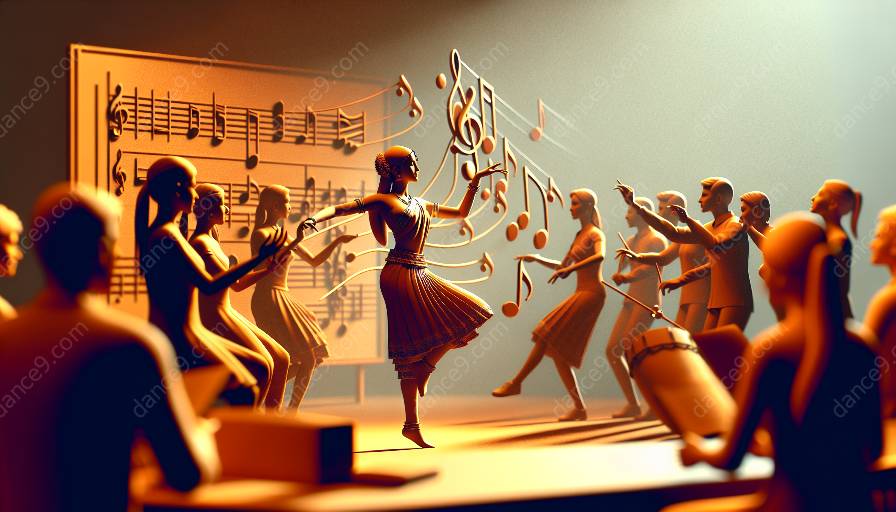Understanding the dynamic interaction between tempo and meter in dance performances is crucial for exploring the relationship between dance and music and its implication in dance studies. Tempo and meter are essential elements of music that significantly influence the choreographic choices, artistic expression, and emotional impact of dance performances.
Tempo and its Impact on Dance Performances
The tempo, which reflects the speed or pace of the music, plays a pivotal role in shaping the dynamics and mood of a dance performance. Different tempos not only demand varying physical exertion from the dancers but also evoke distinct emotional responses from the audience. For instance, a fast tempo often energizes the performance, creating a sense of excitement and urgency, while a slow tempo allows for lyrical and expressive movements, evoking emotions such as contemplation, sadness, or tranquility.
The dancers' ability to synchronize their movements with the tempo of the music is a fundamental skill that contributes to the overall visual appeal and cohesiveness of the performance. Moreover, the interplay between tempo and rhythmic patterns influences the intricacy and complexity of the choreography, showcasing the dancers' technical proficiency and artistic versatility.
Meter: Rhythmic Structure in Dance Performances
Meter, which refers to the organization of beats into recurring patterns, provides the rhythmic framework for dance performances. The rhythmic structure defined by meter guides the dancers in creating patterns, accents, and phrasing that align with the musical composition. A 4/4 meter, for example, often encourages strong and rhythmic movements, while a 3/4 meter may inspire flowing and graceful choreography.
Furthermore, the manipulation of meter within a dance performance can lead to visually striking and unexpected sequences, adding an element of surprise and innovation. Choreographers often play with irregular meters to challenge traditional dance conventions and provoke a sense of dynamism and unpredictability, creating a captivating experience for the audience.
The Interplay between Dance and Music
The relationship between dance and music is symbiotic, with each art form complementing and enhancing the other. The dynamic effects of tempo and meter in dance performances are intrinsically linked to the musical score, requiring dancers to interpret and embody the nuances of the music through their movements. This interplay between dance and music fosters a holistic approach to performance, where dancers become responsive to the tonal qualities, rhythmic variations, and emotional cues present in the music.
Moreover, the collaboration between choreographers and composers further emphasizes the integration of tempo and meter with the musical composition. This collaborative process allows for the seamless alignment of dance movements with musical phrasing and accentuations, resulting in a harmonious fusion of auditory and visual artistry.
Implications in Dance Studies
The exploration of tempo and meter in dance performances holds significant implications for dance studies, shaping the theoretical and practical understanding of choreography, performance aesthetics, and artistic interpretation. Through analytical studies of diverse dance styles, students and researchers can discern how variations in tempo and meter influence cultural nuances, historical contexts, and contemporary expressions within dance forms.
Additionally, the integration of music theory and analysis within dance studies fosters a comprehensive understanding of the interdisciplinary nature of performing arts. By delving into the dynamic effects of tempo and meter, dance studies can encompass a broader spectrum of artistic inquiry, enabling a nuanced appreciation of the interconnectedness of music and movement.
Conclusion
The dynamic effects of tempo and meter in dance performances not only elucidate the intricate relationship between dance and music but also enrich the academic discourse of dance studies. Understanding how tempo and meter shape the expressive possibilities, technical demands, and aesthetic experiences of dance performances enhances our appreciation of the art form's multifaceted nature and opens avenues for innovative choreographic explorations and scholarly investigations.

















